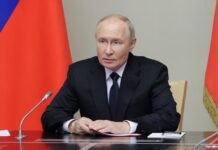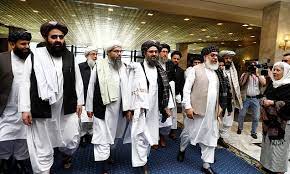Pakistan is now under attack from radical Islamists and jihadists both within its mainland and around its outskirts. Having recently concluded a seven months long wrestle with the far-right political party Tehreek-i-Labbaik Pakistan (TLP) in the Punjab, the country is now looking to resolve the increase in violence along its northwestern ‘tribal belt’, across the border from the Durand Line, in the province of Khyber Pakhtunkhwa.
A Pakistan Institute for Peace Studies (PIPS) report from Orakzai District – one of the seven districts of Pakistan’s tribal area – says the Tehrik-e-Taliban Pakistan (TTP) carried out 95 attacks in the country in the past year, and 44 in the first six months of this year. “The increase in TTP’s attacks is directly proportional to the rise in the Afghan Taliban’s – their ‘ideological twin’ – control in Afghanistan,” says Abid Hussain a writer based in Orakzai District – one of the seven districts of Pakistan’s tribal area.
Locals witnessing the rise of the TTP say that the local jihadists have gained strength from the fall of Kabul. They are no longer fearful of American drone attacks, which have boosted their operational capacity.
The US’s initial pledge of withdrawal from Afghanistan, in 2020, gave the first boost to the violent activity of the Pakistani wing of Taliban. The banned outfit claimed responsibility of 149 assaults throughout the entire year. Stats following the Afghan Taliban’s takeover in Kabul are even grimmer: the TTP took responsibility of conducting 32 attacks in the month of August, 2021, 37 in September and 24 in October, bringing the total to 93 inside three months.
It has been a fall of agreements for the Pakistani government, having first signed a largely defensive deal with Punjab’s Tehreek-i-Labbaik in exchange for a ceasefire, then turning its attention to quelling the unrest within its northwestern Pashtun quarters.
Included in the attacks claimed by TTP – and its proxy groups – are target killings, aimed specifically at police, FC, and Pakistan Army personnel.
Apart from TTP, the northwestern tribal belt of the country is also under attack from Islamic State Khorasan – also known as IS-K or ISIS-K – who are also estranged from the Afghan Taliban, accusing the latter of abandoning the path of Jihad and opting for more peaceful measures like table talks and negotiations. They have imposed the label of “apostates” on the Afghan Taliban, thereby legalizing their killing under their – radical – interpretation of the Sharia.
Under fire – quite literally – from within and without, Imran Khan’s government suddenly finds itself constantly hustling for peace – distributing peace settlements left, right, and center – so that it can finally revert its attention to more important tasks.
It has been a fall of agreements for the Pakistani government, having first signed a largely defensive deal with Punjab’s Tehreek-i-Labbaik in exchange for a ceasefire, then turning its attention to quelling the unrest within its northwestern Pashtun quarters.
Even so, it appears that the Afghan Taliban seem to be pushing their ideological brothers to opt for peace this time, acting as mediators in the talks between the TTP and Pakistan.
“Islamic Emirates of Afghanistan, in accordance with the wishes of Pakistan and TTP, is playing the role of the third party and mediator [in the talks between the two] and the result of this is also becoming evident. We hope that distances would be bridged between the two,” said the interim Foreign Minister of the Afghan Taliban, Amir Khan Muttaqi.
When asked if they are ready to vouch for the TTP and act as their guarantor during the talks, in case the latter breaks the agreement at any point, the Taliban representative replied, “So far an agreement has not been finalized between the two parties, however the start has been promising. And in the first phase of the negotiations, a one-month ceasefire has been agreed to. Both parties agree that talks would continue, which is a good step. Hopefully this process would not experience any problems.”
Apart from the one-month ceasefire – which kicked off on November 9 – Pakistan has also agreed in the temporary agreement to release more than 100 TTP detainees from prison. Senior security sources have confirmed that the government has released more than 100 prisoners of the TTP. Among those released, a majority is of those who were going through the correction process at the government’s internment centers, and were released before the set six month-period.
It is believed that the TTP demanded sharia law to be implemented in Pakistan, along with two other demands: to be granted permission to open a political office in a third country, and to reverse the merger of FATA and KPK. Only a couple of days into the ceasefire, the TTP rebranded its first demand, asking now for sharia to be imposed in the majority Pashtun province of Khyber Pakhtunkhwa.
The TTP called off the ceasefire last week and has resumed its violent terrorism activities against Pakistan’s security forces. Reportedly, the Afghan Taliban are no longer willing to play the role of honest broker while Pakistan simply cannot meet the outlandish demands by the TTP, owing to the ceasefire termination. Negotiations however are still ongoing according to some sources.
Pashtun nationalist leaders and human rights activists have condemned the state’s bid to woo the Taliban, saying that Pakistan should instead punish them for the bloodshed in the tribal belt.
Mohsin Dawar, Member of the National Assembly, and founder of the National Democratic Movement maintains that the state has adopted a duplicitous policy when it comes to dealing with elected politicians from the tribal areas and the jihadist groups that are carrying out militant attacks in the region.
“The state should penalise the TTP for the crimes that they have committed against the Pashtun people, instead of giving them amnesty,” said Dawar.























